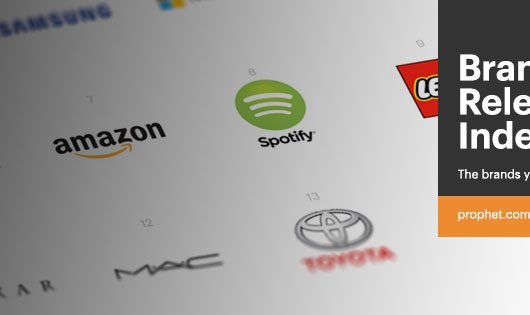How Should Brands Communicate: Q&A With Grey Group’s Huma Qureshi
Brand Communication is imperative to the sustainable success of any brand. In the current competitive landscape, brands must go beyond narrating a compelling story, they need to communicate in a way that inspires and engages. Having a solid and consistent brand communication strategy allows the brand to stand out, cut through the noise, build awareness and drive an emotional connection with the audience. The Brandberries has exclusively interviewed Huma Qureshi, Regional PR and Corporate Communications Director AMEA at Grey Group, to get her two cents on how should brands communicate.
BB: Corporate communication used to be all about exposure and buzz via various media channels; With the rise of new communication concepts, brands find themselves with no choice but to adapt to change. From your opinion, what are the important new trends that corporate communication professionals should keep on their radar?

HQ: It’s always good to have a healthy skepticism towards trends as they come and go but some stick and stay for a longer time and lay the foundation for a permanent change. Those are the ones that bring with them a learning curve for new skills; examples would be AI, Data Analytics, and most things tech/ digital related. This means those professions also need to adapt, evolve and show agility to stay relevant.
There are a few trends that will increase significantly in importance as they add value or efficiency. Currently, there are a plethora of examples; I will only mention a few with regards to PR and communications.
One area of particular focus this year will be content marketing. Successful content marketing is educational in purpose, and social media (Youtube videos, blogs, e-books, webinars, etc..) plays an integral part in this. It is a more subtle form of marketing than the traditional kind simply because it does not promote any one brand, but instead builds up interest in a product or service and feeds the curiosity of the audience by supplying information and answers. In return, the brand is seen as an authoritative expert with credibility on topics that matter to their existing and potential clients. Essentially the content is the hook that your product is the best fit and that your company has the most knowledge and expertise about this product or service.
Storytelling is another. Though it has been championed for some time by the industry, it still hasn’t reached its full potential. It requires time, money, authenticity, inspiration and the creation of emotionally engaging narratives, not all of which are easy to come by. Plus, the added challenge that great stories are also extremely difficult to execute. But if it hits the mark, and resonates with the consumer, it forms a personal connection which opens doors to brand loyalty and customer retention despite a competitive environment and builds a stellar reputation based around the branding that can stay with the company for decades.
Thirdly, now more than ever, the brand values and principles are crucial to the success of brand-building. Seth Godin defined it as, ‘A brand’s value is merely the sum total of how much extra people will pay, or how often they choose, the expectations, memories, stories, and relationships of one brand over the alternatives. People don’t just buy a product anymore –they want to know where it was made, by whom it was made and is the brand in touch with the values it purports. The journey of how the product got on the shelf matters. What’s interesting is that it’s not just the consumers who are demanding this, but potential employees too. They look closely at company values and the culture when they commit to working for them. You find companies now state their values and give it as much importance as they do listing the services they offer, examples such as diversity, sustainability, integrity, accountability, gender equality and other similar items often make it on the list.
With all this comes transparency. People have access to a huge amount of information from online sources, and this has given rise to a demand for openness, honesty, and authenticity from the consumers, the public and the employees as well. Corporate communications has taken on another role. They are not only the voice of the company or brand -they have to make sure they don’t leave more questions than answers when disseminating information. The tone of the voice needs to be attuned to the values of the brand, and any reputational challenge has to be dealt with swiftly and with enough information to satisfy the public.
There are wider issues at stake, too. Advertising agencies, media agencies, PR agencies, even consultancies, are battling to take the lead communications role, with everything from digital to data and content being fought over. Who, for example, should be responsible for a brand’s social media or Public relations? Is the answer Digital agencies, Creative agencies, or Social media agencies, perhaps a combination of all three. All disciplines are vying for dominance, and this impacts time and money spent on any given trend or aspect of communication.
How content is distributed using social media platforms will also be fine-tuned during the course of this and next year. The type of social media will very much depend on the audience and the kind of information you are trying to push out. Twitter, fast and furious and concise and much more accessible to a wide audience. Instagram, mostly happy content, where one posts to feel good -holiday snaps, food porn or content that would be of interest. A website is the brand window, which gives a flavor of what they do and how they do it. YouTube which is gaining a larger audience every day through their vast range of short-videos, and finally linked-in, perhaps the best platform for one to reach out to existing and potential employees as well give a look-in into the culture of the brand or company. Facebook is there too though losing its importance with the newer generation and now more inclined towards keeping in touch with family, friends as well as for gettings articles from a range of sources and publications.
Though I am only going to touch upon it -brands are looking to stand out from each other, and they are using technology to do this. An obvious example is Artificial Intelligence (AI) and how to enhance the customer experience -whether it is cutting tailor-made, fan-requested clips of the world cup action this summer or making a shopping experience as automated, informative and stress-free as possible. There are many ways to use tech and brands are investing in it to set themselves apart and to get ahead of the competition.
What we will see for sure in the next few months is a tightening of regulatory controls for social media platforms. Set against this is of course freedom of speech and information. A fine balance will have to be reached so that both sides are content.
BB: For brands, fake news on social media is an existential threat. Do you think this will affect the level of online brand engagement on social media platforms? In times of fake news, should brands remain silent, refute news or generate content in a different direction? Please elaborate
HQ: If fake news directly impacts a certain brand, then yes, it should refute all damaging allegations against it. In this day and age where misinformation gets disseminated at the speed of light, one has to take action to move quickly and give their side of the story. The speed of reaction will determine the amount of damage that takes place as well as what content or statement is made by the brand. The words they use, the speed with which they respond and if they come across as authentic and honest, all has a direct impact on the amount of reputational damage that will be caused or averted.
But fake news is just part of a far wider problem. Ad fraud, brand safety, privacy, alleged political interference, and data scandals exemplified by occasions such as a very public dressing-down of Facebook and Cambridge Analytica -have not helped to improve people’s faith in social media or the tech giants that increasingly dominate our lives. Will any of this have an impact on brand engagement on platforms such as Facebook and YouTube? For the present, I doubt it, or at least till a better alternative presents itself. No one can afford to remove themselves from platforms from which they may be garnering results.
Budgets may shift towards Instagram, but interestingly, earlier this year Facebook itself announced a move away from brand and media posts, with more emphasis on content from friends and family. Maybe it’s finally realised that people don’t want their newsfeeds to be cluttered with brand messaging and they will work more on their strength of connecting people.
BB: The use of influencers has been one of the dominating highlights that gained momentum in 2017 with leaning on online influencers more than celebrity endorsements. How can the use of influencers for brands evolve in 2018 for a better ROI?
HQ: There are many unresolved aspects related to the use of influencers per se, in the region, not least brand relevance and doubts over effectiveness and measurement. Although 94 percent of marketers who use influencers believe the tactic to be effective, according to Linqia’s ‘The State of Influencer Marketing 2017’, 78 percent also said that determining the ROI of such campaigns is a big challenge.
And then there’s disclosure. As the Advertising Standards Authority in the UK states, “marketing communications must be obviously identifiable as such.” This does not apply in the Middle East and North Africa, although the news earlier this year that paid social media influencers in the UAE will soon need a media license may change that. So it is on everyone’s radar and how to manage will also need to be addressed.
If influencers are going to continue to be a part of the media landscape, then ROI can only be improved by recognising that relevance, transparency and proper governance are of paramount importance. What’s more, it is an influencer’s interaction with their followers and the quality of those followers, not numbers, that matter.
The use of influencer marketing is evolving and getting more refined in trying to reach the right target market as well as creating new opportunities on how to calculate engagement, ROI, and other metrics. This has led to the emergence of the micro-influencers who may have fewer followers, but the conversion rates for the brand is higher than the mega-influencers. And wherever there is a gap in the market –there will be place to add new tools. For example ‘Influencer directories’ are available so you can pick the most effective influencer(s) for your brand. Tools for finding out engagement numbers and other metrics can also be found on social marketing sites such as https://phlanx.com/.
Lastly, one thing to remember is an obvious one. Influencer marketing is a double-edged sword. They represent or endorse your brand and so any negative publicity they get, even from an unrelated incident and not directly related to your brand will also have an immediate and detrimental effect on your brand too. That is why choosing the right influencer, who represents what I call ‘value characteristics’ of your brand, is all-important.
BB: One of the historical industry debates has revolved around whether doing PR in-house or hiring a professional corporate communication agency. Can you mention some differentiators that would encourage brands to do PR with a firm instead of doing it in-house?
HQ: It all comes down to funding, commitment, and intent. There is, after all, a shared culture, understanding, and engagement with an in-house PR team. However, difficulties often arise because everyone does share this similarity and for the internal PR team to avoid thinking inwardly and to come up with innovative and ‘out-of-the-box creativity –might be a big ask.
External agencies, meanwhile, can offer fresh perspectives, broader skill-sets, geographic reach and access to global systems. With this, however, frequently comes increased cost and, sometimes, indifference on the part of account managers. If used on a project-by-project basis, however, they can offer the flexibility that a fixed internal cost doesn’t.
I would probably say depending on how essential the PR aspect is to the agency and how effective you need it to be then I would choose a combination of the two. A lean in-house team and a PR agency with full access to resources, working in tandem so a truly authentic culture can be represented by those who have perhaps greater expertise in the field.
BB: Nowadays, Brands are all about designing engaging experiences. How can corporate communication professionals help brands narrate their stories and create an emotional attachment?
HQ: By being storytellers themselves. The telling of tales is not the sole remit of creative agencies or brand managers. Stories are universal and so too is their creation. The trick is finding stories that are relevant to a brand and are not forced. Don’t try and tell a story if you’ve got nothing to say.
What’s more, the proliferation of channels and the ubiquity of technology has made it possible for stories to be more immersive and interactive than ever before. And at the heart of those stories should be empathy, humanity, and authenticity.
BB: Corporate communication pros who work in the digital sphere are often faced with an all-time dilemma; Content Virality Vs. Paid tools. How can they constantly find new content niches, social communities, and influencers, organically?
HQ: In my experience, success comes with the foundation of creating great work. Full stop. That’s your product, and if it stands out, then it will be well-received. Content that keeps people engaged, stories that touch a human nerve and content that people can relate to, be it with humour where posts bring a smile to a face, empathy which people can relate to from their own experience or whichever method that creates a reaction –that is what will enable your work to lead the field . The rest of it will follow, provided you have the digital know-how to enable ideas to reach the largest possible audience. The key is to produce something outstanding and then use the right tools to extend and magnify its reach.
Using the right platform for your social media has also become increasingly important and more sophisticated. No longer what it once may have been –a one size fit all.





